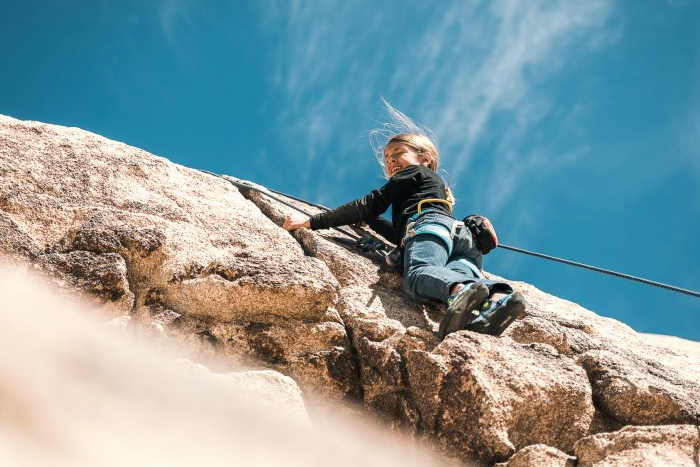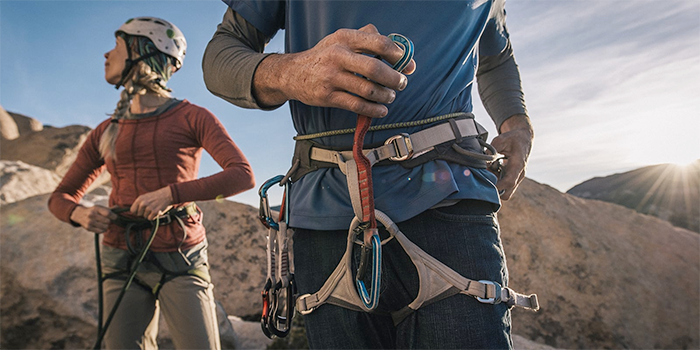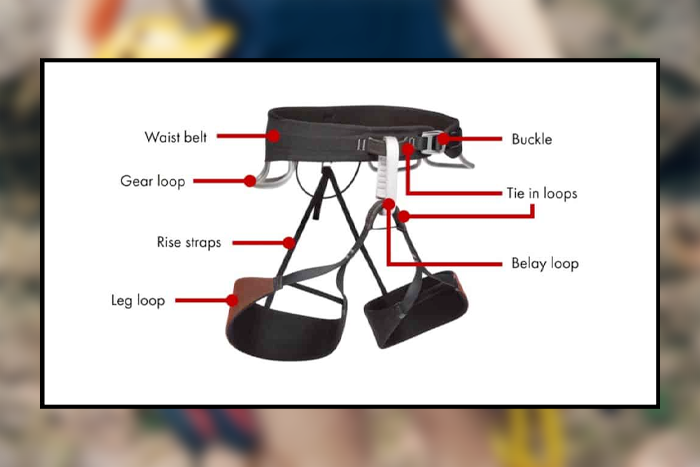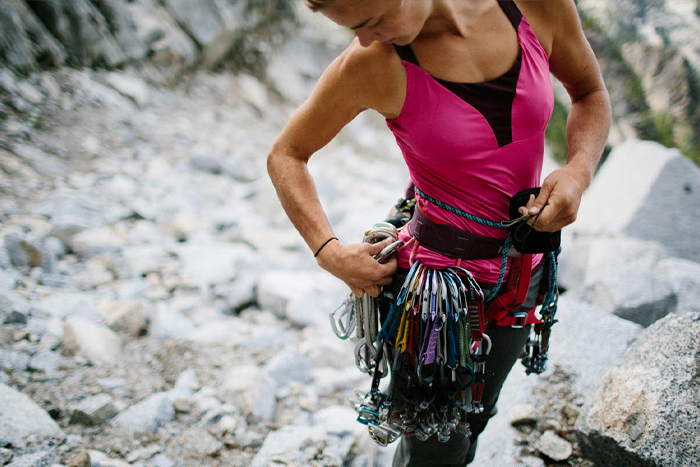Rock climbing is a great way to get your adrenaline pumping and your blood flowing. It’s also a fun activity to do with friends and loved ones. The best part about rock climbing is that it can be done in many different settings, such as at the gym, outdoors, and even at home if you have the necessary equipment. Getting started with rock climbing can be intimidating since you’d need to get yourself what we like to call essential climbing gear. One of the fundamental items of a full climbing gear collection is a climbing harness.
If you are looking to buy a new harness, then you should know that there are many different types available on the market today. Furthermore, if you are not familiar with technical climbing lingo, then selecting the right climbing harness for your needs might seem like an impossible task. Luckily, things aren’t as bad as they may seem, and by reading this guide you will be able to pick a fitting harness and keep yourself safe while climbing.

Figure Out What Type of Climbing Will You Be Doing
Climbing harnesses are an essential part of any climber’s equipment. Depending on the kind of climbing you want to do, you will need a different type of harness. All climbing harnesses come with leg loops to attach your legs in when you are climbing. However, they vary in terms of leg strap sizes, padded waist belts and other design elements. The most important thing you should decide before purchasing a harness is what type of climbing you will be doing. Different climbing harnesses are designed for different activities.
As a climber, you should take the time to decide what type of climbing you will be doing the most. If you are an indoor rock-climbing enthusiast, then an all-around harness is best for your needs. If you are into multi-pitch traditional climbing or ice climbing, then a more specialized harness that has gear loops will be necessary. If you are just starting, it is best to start with a full-body harness. However, if you have experience in rock climbing and want to try out ice or trad climbing, then consider purchasing a separate harness for each activity. Selecting the right harness can help prevent injuries and make your experience much more enjoyable.
Main Types of Climbing Harnesses
When you’re starting, a climbing harness can seem like a bit of a puzzle. There are a variety of styles and features to think about, and it’s hard to know which is best for you.

Climbing harness Australia stores sell can be divided into a few main categories: gym climbing, sport climbing, trad/traditional climbing, mountaineering or alpine.
- A “gym” harness is designed for indoor or outdoor sport climbing and bouldering. These harnesses are typically equipped with multiple gear loops and a sewn-in belay loop (a metal ring used to attach the rope to the harness). A gym harness does not have a waist belt or leg loops, which means it offers less support and comfort than a traditional harness.
- A sport climbing harness is designed to be worn over a base layer of clothing and secured by a waist belt and leg loops. This type of harness is ideal for lead climbing because it facilitates movement while being belayed from above. Sport climbing harnesses have four or five gear loops that are woven into the waist belt and leg loops.
- A trad/traditional climbing harness is made for sport climbing or bouldering, or any kind of climbing where there isn’t a fall danger. These are usually lightweight with very few pieces. The one-size-fits-all design makes them easy to adjust for fit, but they can’t be fine-tuned for each individual’s body shape.
- A mountaineering harness has more gear loops that are sewn into the waist belt, though there are still one or two gear loops on the front of the leg loops. This helps to keep all your gear organized so you don’t spend time searching for what you need during critical moments on a climb. A mountaineering harness is designed to fit over bulky clothing layers so it has adjustable leg loops and an adjustable waist.

Parts of the Climbing Harness
Your climbing harness is the most important piece of equipment you own. The right harness for you will give you a full range of motion while climbing, be comfortable, and provide the best protection should you fall.
A climbing harness is made up of four main parts: waist belt, leg loops, front buckle, and rear buckle.
- The waist belt is the foundation of the harness. It attaches directly to your belay loop or tie-in points on the harness and supports the majority of your body weight during a fall. Look for a belay-style belt that has multiple gear loops sewn into it. These are versatile and work well with any type of rope rigging system.
- Emphasis should be placed on comfort when picking out your harness. After all, if it’s too tight or too loose around your waist or legs, you run the risk of it shifting while you’re climbing. The leg loops should fit snug without being too tight, while still having enough room to allow for movement when edging or traversing. Look for padding around all stress points – especially where the leg loops connect to the waist belt – for added comfort and support during long climbs.
- The adjustable front buckle tends to be used for fine-tuning the fit while the rear buckle is used for larger adjustments to accommodate layers or backpacks.
Materials and Durability
Harnesses are typically made of nylon, although some harnesses are made of leather. Harnesses are also available in man-made fibres such as polyester and polypropylene. A climber’s harness, unlike that used by rappelers, has to be lightweight for the climber to move easily. They may have to rappel occasionally but for the real climbing work, they need a harness with maximum ease. A man-made fibre is preferable for this purpose because it does not stretch when used, so the fit does not change while the climber is working in it. The stretchy rope used in rappelling stretches out the harness so it no longer fits properly when the climber reaches the end of the rope. This can lead to serious accidents if there is no backup safety system.

How to Find the Correct Size That Fits You
The climbing harness Australia available can come in a range of sizes from extra small to extra-large, depending on the brand. The sizes are based on your waist measurement. The harness should fit comfortably around your hips and allow at least four inches of play either way. It should be tight enough to keep the leg loops from sagging, but not so tight that it is uncomfortable or restricts blood flow.
Your weight will not affect the fit of your harness, only your height and the size of your waist. If you are a tall climber with a small waist, look for a harness with a longer hip belt that can be adjusted for a snugger fit. This will help reduce pressure on your legs from the weight of the gear you carry. Harnesses with adjustable leg loops also have this feature. A climbing harness must fit you correctly, so spend some time trying on different styles and sizes before choosing one.
To Finish Up
After all is said and done, the best climbing harness will likely be the one that fits you best. However, there are plenty of issues to consider while deciding on a harness. After all, each harness type has its own advantages and disadvantages. So, while it’s hard to pick the best type of harness overall, you can use these factors to help guide your final decision.












